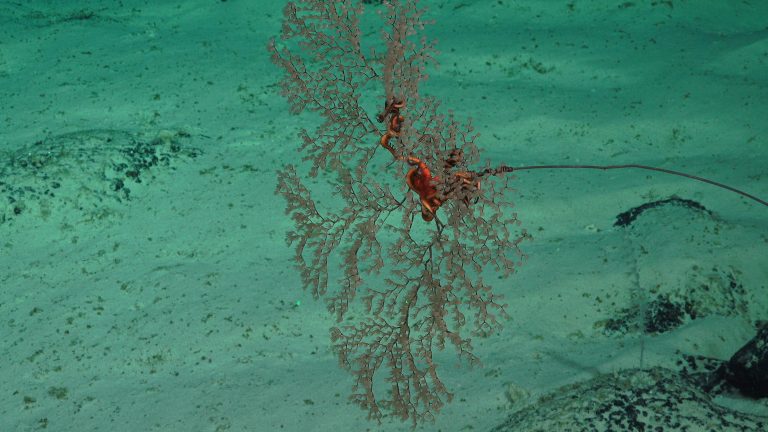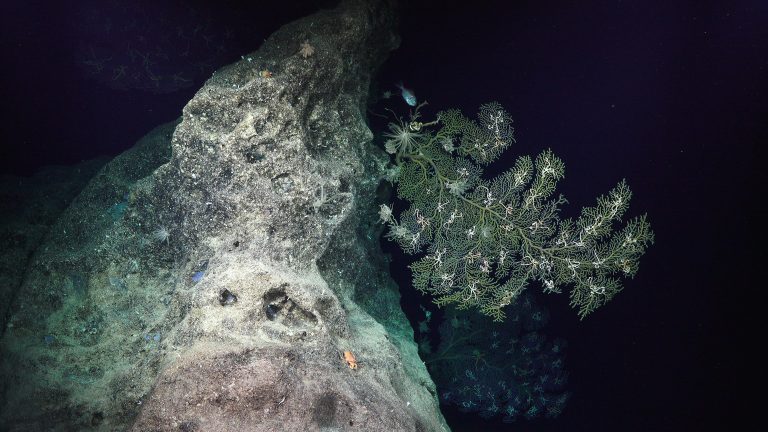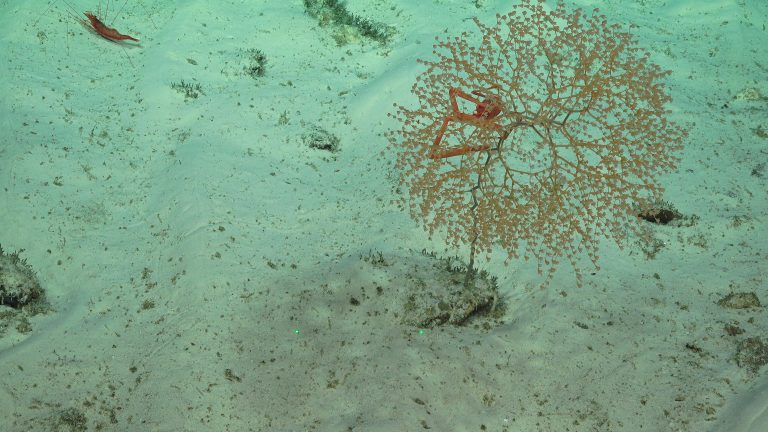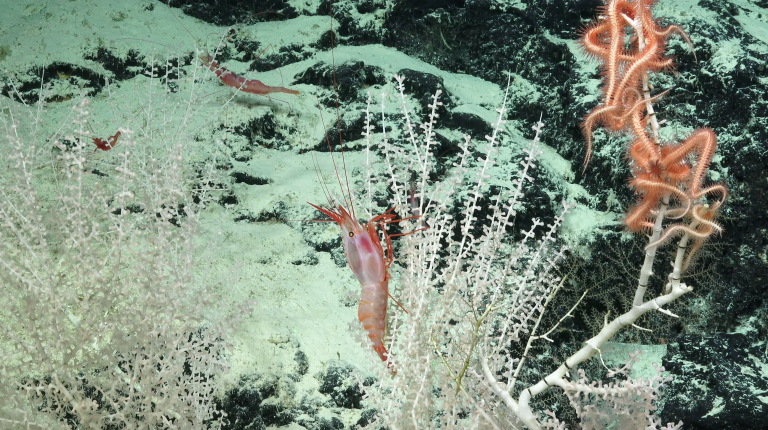Deepwater corals are many things, including fascinating, diverse, slow-growing, threatened, and susceptible to deep-sea fisheries or mining activities. Yet they have another very important quality: the ability to harbor – and play home to – a broad array of associated animals. Of the more than 3,000 species of cold water corals, some estimate that as many as 3,500 species, including commercially important species, live in direct association with them. This ability to provide habitat for other species and the adaptations these coexisting fauna have for each other makes these deep water relationships important and of immediate interest to conservationists, commercial fisheries, resource managers, and scientists.
The Importance of Coral-Invertebrate Associations
Scientists have known for a long time that certain species of crabs, brittle stars, worms, and shrimp live on (or within) the branching structures of deepwater corals. Diverse deep-sea fauna seek to move up off of the seafloor – and onto corals and sponges – in order to surround themselves in nutrient-rich currents. This is a facultative existence. Only recently have we learned just how specific these coral-invertebrate associations can be. One example we have seen on this cruise is a species of octocoral that hosts only a single individual of a 5-arm brittle star species, living wrapped tightly among the interconnected branches. It is currently believed that, once together after their larval stages, Metallogorgia and Ophiocreas species (shown below) spend their remaining lives together – an “obligate” existence.

Other species of octocorals may host many brittle star associates. On our last dive at Orona Atoll, we discovered large sea fans of the family Plexauridae that hosted dozens of brittle stars per colony.

Like brittle stars, other animals have evolved life histories that depend on deep-sea corals. At Kanton Atoll, we observed a squat lobster crab in the family Chirostylidae living within the branches of a Chrysogorgia, a genus of octocoral. We have observed similar squat lobsters as the one shown here populating other Chrysogorgiid corals in what may be considered a family unit, with adults (some carrying eggs) and small squat lobsters living within the same coral colony. While the crabs may find protection from predators and feed on organic particles captured by the coral, it is unclear whether or not the coral benefits from hosting these crabs.

These highly specific relationships have led to fundamental questions about how these invertebrates living on corals disperse and locate their coral host. How have these specific relationships formed? And how might the diversity of life be affected if the coral habitats are lost to variations in ocean chemistry, temperature, fisheries and other activities?
In addition to these partnerships, if you tune into our livestream, you are also likely to see other crustaceans, such as amphipods (maintaining reproductive houses), shrimp, and polychaete worms that call deep-sea corals home.

Cold-Water Corals Provide Critical Habitats
Cold-water corals provide critical – if not essential – habitats that support a diversity of species, including the highly intimate relationships we are only beginning to understand. Corals appear to colonize areas and grow very slowly (some corals have been dated to be over 4,000 years old), and disturbances like mining, fishing, and abrupt chemical changes in these areas wipe out both the large stands of fragile corals, as well as the diversity of species living on them. Without these corals as homes for other species, the future of the associated species is also threatened. Conservation managers around the world are trying to manage and protect coral areas, hoping to stem the loss of this biodiversity. The goal of this expedition is to provide important insights into how these associations are maintained through dispersal and genetic connectivity, so that we can help guide management and protection of these valuable resources in our deep ocean.
We are documenting and sampling the diverse inhabitants of deep water corals in the Phoenix Island Protected Area. Back in our lab at the Woods Hole Oceanographic Institution, we will: 1) identify invertebrate-symbiont species associations through genetic barcoding and morphological assessments of the coral associates; 2) examine the composition of host and associates with habitat, depth, geographic location, fidelity and ecological function, and add our observations to a global biogeographic database, and 3) categorically analyze the ecological function (e.g., predation, protection, parasitism), and relationship fidelity (e.g., facultative, obligate, commensalism) in order both to understand how deep water corals and their diverse associates have evolved their amazing relationships and provide critical information for the management of the deep waters of the Phoenix Islands Protected Area.


